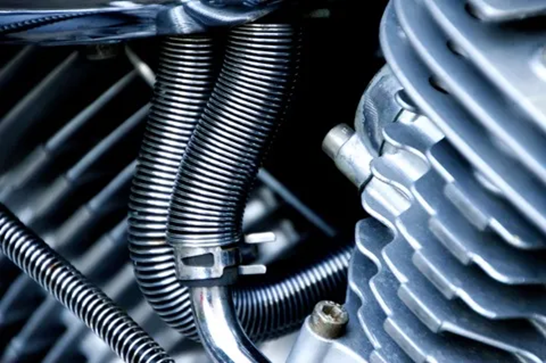Understanding Engine Cooling Systems: Keeping Your Engine Cool

Engines are the powerhouses of vehicles, producing a significant amount of heat during their operation. To ensure your engine doesn't overheat and sustain damage, an effective cooling system is essential. In this article, we will explore how engine cooling systems work to maintain your vehicle's optimal temperature, the various components involved, and the significance of cooling your engine.
The Circulation of Coolant
A typical cooling system involves circulating coolant, typically a mixture of water and antifreeze, through specific cooling passages in the engine. This coolant absorbs the engine's heat, preventing it from reaching critical levels that could lead to damage.
The Role of a Water Pump
The heart of the cooling system is the water pump, which is powered by a belt connected to the engine's crankshaft. This pump is responsible for driving the hot coolant out of the engine and into the radiator, a vital component that acts as a heat exchanger.
Radiators and Their Function
Radiators are integral to the cooling process. They work as heat exchangers, transferring the unwanted heat from the coolant to the surrounding air. The radiator has a series of thin tubes running through it, increasing the surface area and allowing for efficient heat dissipation. When the heated coolant flows through these tubes, the air passing over them cools it down, preparing it to return to the engine.
The Role of Pressure and Radiator Caps
To avoid the risk of boiling within the engine, the cooling system operates under pressure. A radiator cap with a spring-loaded valve maintains this pressure. Excessive pressure will cause the valve to open, releasing coolant through an overflow pipe. Consequently, maintaining the right pressure is critical in preventing overheating.
Controlling the Flow: Thermostats
Thermostats play a pivotal role in engine cooling systems. They regulate the flow of coolant through the engine. When the engine is cold, the thermostat remains closed, forcing the coolant to circulate within the engine. As the engine warms up, the thermostat opens, enabling the coolant to flow through the radiator for cooling.
The Significance of Fans
When a vehicle is stationary, ensuring adequate airflow through the radiator is essential. Most vehicles are equipped with fans to accomplish this. Some fans are engine-driven, while others are electric, activated by a temperature sensor. Engine-driven fans can consume fuel, so some vehicles have viscous couplings that disengage the fan when not needed, reducing fuel wastage.
Antifreeze and Its Role
Antifreeze, typically ethylene glycol, is mixed with water in the cooling system to lower the freezing point of the liquid. This prevents water from freezing and causing damage to the engine or radiator. Antifreeze doesn't need to be drained every summer and can be left in the system for extended periods.
Air-Cooled Engine Systems
While water-cooling systems are common, some engines employ air-cooling methods. In air-cooled engines, deep fins on the engine block and cylinder head dissipate heat. These fins often have ducts to facilitate the flow of air. A temperature-sensitive valve controls the airflow and keeps the engine at a consistent temperature.
Conclusion
Understanding engine cooling systems is essential for vehicle owners and operators. Maintaining your engine's optimal temperature is crucial for its longevity and efficient operation. Regular maintenance and attention to the various components of the cooling system can help prevent overheating and costly engine damage.